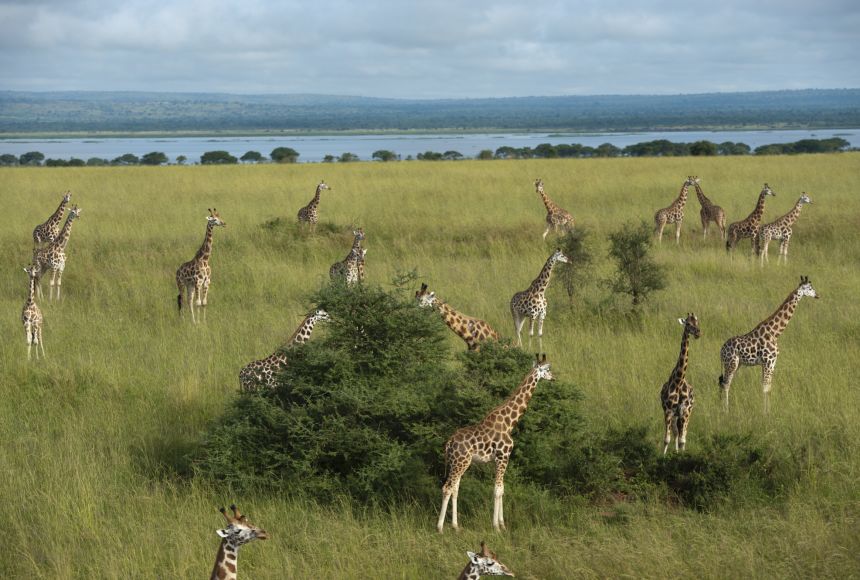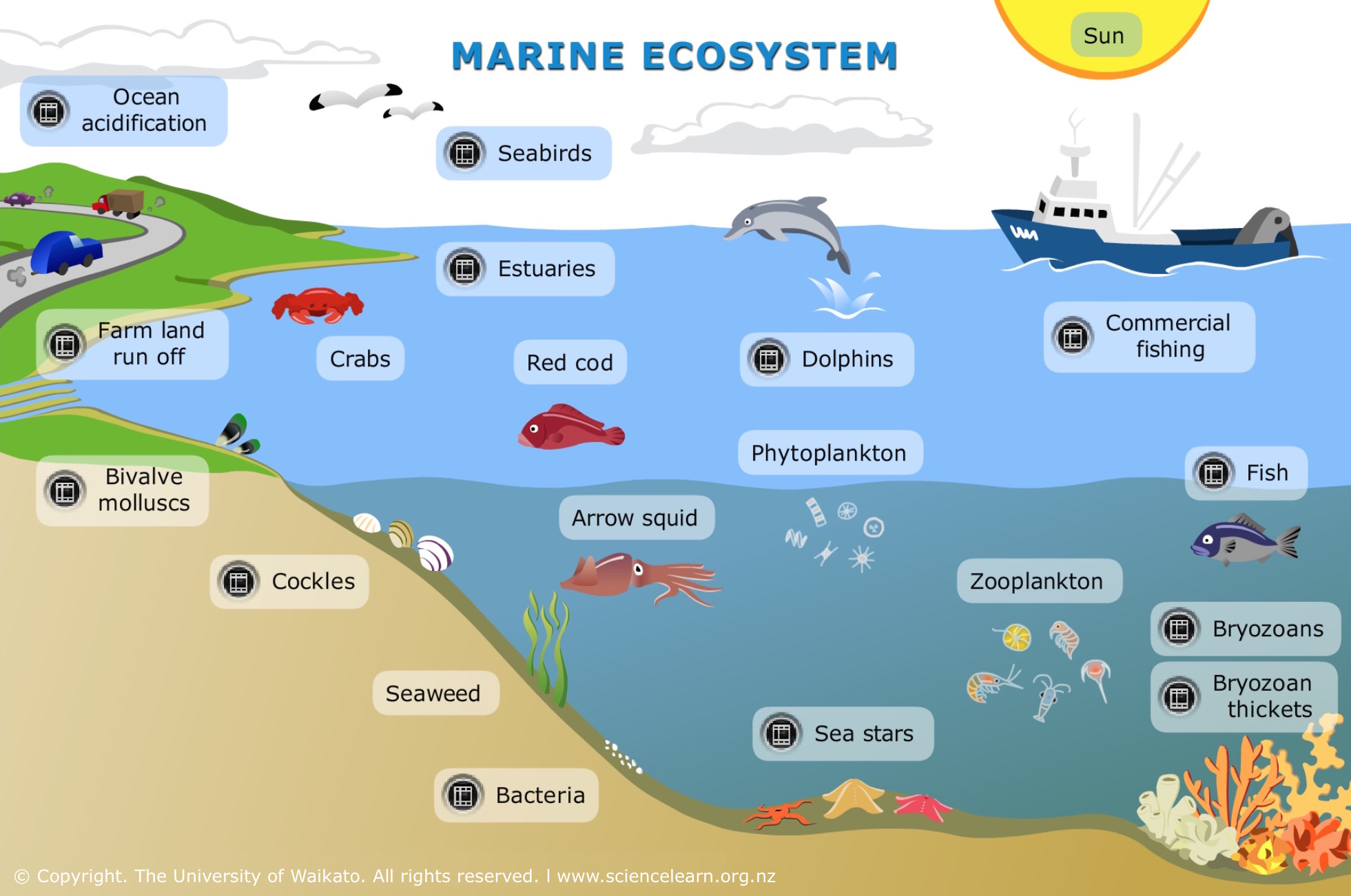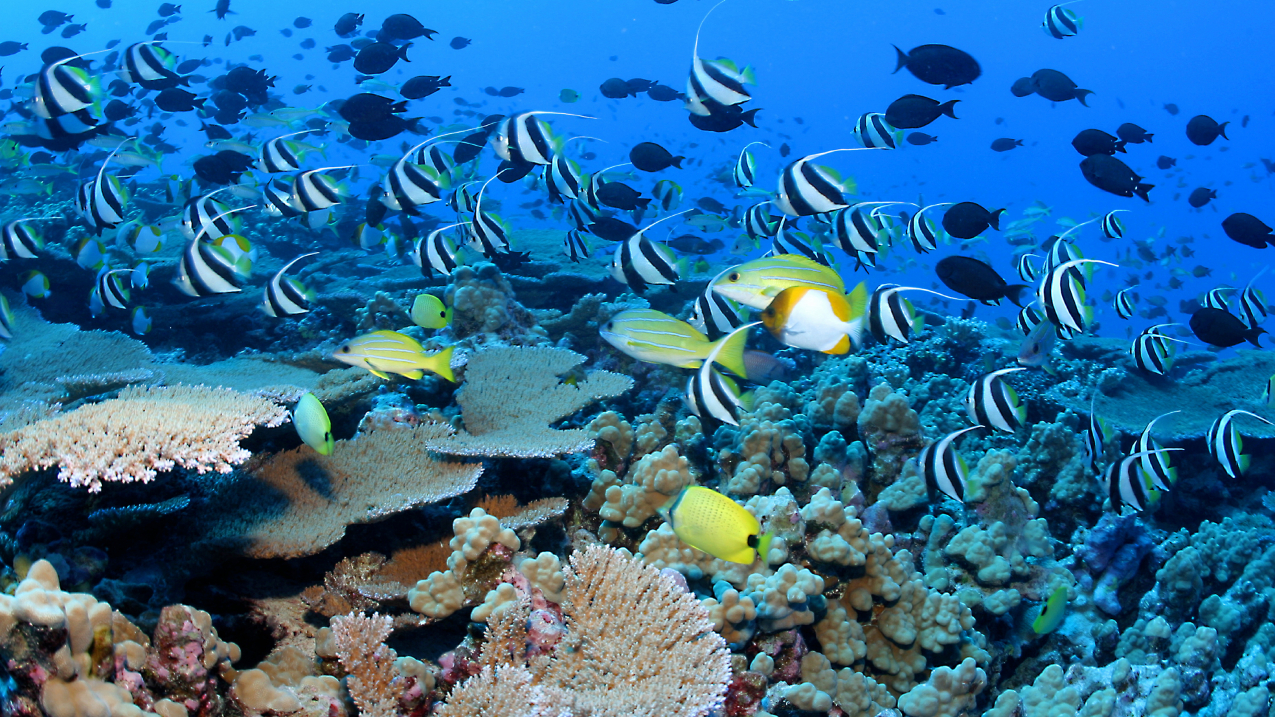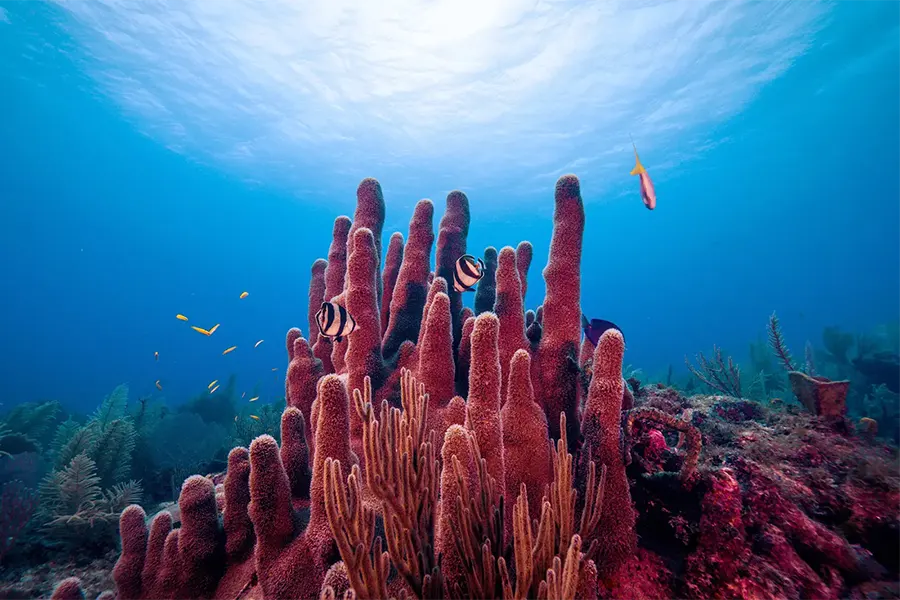Topic ecosystems of grasslands: Discover the vast, vibrant ecosystems of grasslands, where diverse species thrive and landscapes offer a mosaic of ecological wonders, playing a crucial role in our planet"s health.
Table of Content
- What is the biodiversity of healthy grassland ecosystems?
- Types of Grasslands
- Geographical Distribution
- Flora and Fauna
- Ecological Importance
- Threats and Conservation Efforts
- YOUTUBE: GRASSLAND ECOSYSTEM Animation
- Grasslands and Climate Change
- Economic Value
- Management and Restoration Practices
- Cultural and Historical Significance
- Research and Education in Grassland Ecosystems
What is the biodiversity of healthy grassland ecosystems?
The biodiversity of healthy grassland ecosystems is high.
- Grasslands support a wide variety of plant species, including grasses, wildflowers, and herbs. These plants provide food and habitat for many animals.
- Mammals such as bison, gazelles, and prairie dogs can be found in grasslands. They play important roles in maintaining the balance of the ecosystem.
- Grasslands are also home to numerous bird species, both resident and migratory. Birds rely on grasslands for nesting, breeding, and foraging.
- Insects, including bees, butterflies, and grasshoppers, are abundant in grasslands. They play a crucial role in pollination and nutrient cycling.
Overall, the biodiversity of healthy grassland ecosystems is essential for the functioning of the ecosystem and the survival of various species.
READ MORE:
Types of Grasslands
Grasslands, characterized by wide open spaces filled with grasses, herbs, and shrubs, are vital ecosystems found across the globe. They fall into several main types, each with unique characteristics and ecological roles.
- Tropical Grasslands (Savannas): Found near the equator, these grasslands experience warm temperatures year-round and distinct wet and dry seasons. They are home to a diverse array of wildlife, including large mammals like lions, elephants, and giraffes.
- Temperate Grasslands: These are located in regions with more moderate climates and typically have fewer trees except near rivers or streams. They are known for their rich soil, making them important for agriculture. Common in North America (the Great Plains), Eurasia (the steppes), and other areas.
- Prairies: A subtype of temperate grasslands, prairies are characterized by tall grass species and are primarily found in North America. They play a crucial role in supporting a variety of species, including bison, prairie dogs, and numerous birds.
- Steppes: Similar to prairies but found in Eurasia, steppes feature shorter grasses and can withstand more extreme temperature variations. They support a rich diversity of birds and mammals, including the endangered saiga antelope.
- Pampas: Located in South America, particularly in Argentina and Uruguay, these fertile grasslands are known for their tall grasses and are critical for livestock grazing and agriculture.
- Velds: The vast grasslands of South Africa, known as velds, vary from semi-arid to subtropical with a rich biodiversity, including numerous species of plants and animals, many of which are endemic to the region.
Each type of grassland plays a significant role in our global ecosystem, supporting diverse communities of plants and animals, while offering valuable resources for human use and contributing to the balance of our planet"s climate and biodiversity.

Geographical Distribution
Grasslands are a global phenomenon, spanning across every continent except Antarctica, each region offering a unique blend of flora, fauna, and environmental conditions. The distribution of grasslands around the world highlights their ecological diversity and importance.
- North America: The Great Plains stretch from Canada to Mexico, embodying vast temperate grasslands that once supported millions of bison and prairie dogs.
- South America: The Pampas of Argentina and Uruguay are renowned for their fertile soils, supporting both diverse wildlife and extensive agricultural activities.
- Africa: Savannas cover much of the continent"s central region, with the Serengeti and Masai Mara offering some of the most biodiverse ecosystems, teeming with large mammals and birds.
- Asia: The steppes, extending from Ukraine in the west through to Siberia in the east, are characterized by vast expanses of grasslands, supporting nomadic lifestyles and unique species.
- Europe: The Eurasian Steppe includes areas such as the Hungarian Puszta, an essential habitat for birds and a variety of steppe species.
- Australia: The Australian savannas and grasslands are home to unique species like kangaroos and wallabies, adapted to the continent’s dry conditions.
This geographical distribution demonstrates the adaptability of grasslands to a wide range of climates and conditions, from the wet savannas near the equator to the dry, cold steppes of Central Asia. Their presence on nearly every continent underscores their critical role in global biodiversity, climate regulation, and human economies.
Flora and Fauna
Grasslands, with their diverse climates and geographical locations, host a wide array of plant and animal life, each adapted to thrive in the open, often unpredictable environments characteristic of these ecosystems.
- Flora: The flora of grasslands primarily comprises various grass species, which form the backbone of these ecosystems. In addition to grasses, there are numerous species of herbs, flowers, and shrubs, such as sunflowers, clovers, and wild indigos, which provide essential nutrition and habitat for wildlife. These plants are specially adapted to conditions of drought, fire, and grazing.
- Fauna: Grasslands support a rich diversity of fauna, including large herbivores such as bison in North America, wildebeest and zebras in the African savannas, and kangaroos in Australian grasslands. These herbivores are followed by a variety of predators, including lions, wolves, and eagles. Smaller animals, such as prairie dogs, ground squirrels, and insects, play crucial roles in pollination, soil aeration, and as prey for larger species.
In addition to these, grasslands are vital for migratory birds, serving as stopover points where they can rest and feed during their long journeys. The diversity of grassland flora and fauna, along with the complex interactions among species, underscores the ecological importance of these habitats for maintaining biodiversity and ecosystem services.

Ecological Importance
Grasslands play a pivotal role in maintaining the balance of ecosystems worldwide, offering a multitude of ecological benefits crucial for the environment and human societies.
- Biodiversity: Grasslands are hotspots of biodiversity, supporting a wide range of plant and animal species. They provide essential habitats for many species, some of which are endemic and cannot survive in any other habitat.
- Soil Formation and Protection: The deep root systems of grassland plants help in the formation of soil and prevent erosion. These roots also increase soil porosity, enhancing water infiltration and reducing surface runoff, thereby preventing floods.
- Carbon Sequestration: Grasslands act as significant carbon sinks. The plants absorb carbon dioxide from the atmosphere during photosynthesis and store it in their roots and the soil, helping to mitigate climate change.
- Water Regulation: The porous and well-structured soils of grasslands allow for effective water filtration and storage, ensuring clean water supplies and maintaining aquifer levels.
- Supporting Livelihoods: Grasslands provide vital resources for millions of people, including fodder for livestock, materials for shelter and clothing, and are crucial for agriculture and recreation.
- Climate Regulation: By storing carbon and influencing local and regional weather patterns, grasslands play a critical role in regulating the climate.
The ecological importance of grasslands extends beyond their immediate environmental benefits, impacting global biodiversity, climate stability, and human well-being. Protecting and restoring grasslands is therefore essential for sustaining nature"s balance and ensuring a resilient planet for future generations.
Threats and Conservation Efforts
Grasslands face numerous threats that jeopardize their ecological integrity and the myriad of life forms they support. Recognizing these challenges is crucial for implementing effective conservation strategies.
- Land Conversion: The conversion of grasslands to agricultural lands, urban development, and infrastructure projects significantly reduces habitat areas, leading to biodiversity loss.
- Overgrazing: Unsustainable grazing practices can degrade grassland ecosystems, leading to soil erosion, reduced plant diversity, and disrupted habitats.
- Climate Change: Altered precipitation patterns, increased temperatures, and more frequent extreme weather events can profoundly affect grassland ecosystems, impacting species distribution and ecosystem services.
- Invasive Species: The introduction of non-native plant and animal species can outcompete native flora and fauna, leading to significant ecological imbalances.
- Pollution: Chemical runoff from agriculture and industry can contaminate soil and water sources, harming wildlife and plant life.
In response to these threats, conservation efforts are being undertaken globally:
- Protected Areas: Establishing and expanding protected regions to conserve critical grassland habitats and their biodiversity.
- Sustainable Practices: Promoting sustainable agriculture and grazing practices to balance productivity with ecological preservation.
- Restoration Projects: Initiatives to restore degraded grasslands through reseeding native plants, controlling invasive species, and rehabilitating soil health.
- Climate Action: Efforts to mitigate climate change impacts on grasslands through carbon sequestration projects and adaptation strategies.
- Research and Monitoring: Supporting scientific research to better understand grassland ecosystems and the effects of human activities, informing policy and conservation practices.
Through concerted global and local efforts, it is possible to address the threats facing grasslands and ensure their preservation and resilience for future generations.

GRASSLAND ECOSYSTEM Animation
Get ready to be mesmerized by the captivating world of animation! Dive into a world where imagination knows no bounds, as vibrant characters come to life and tell enchanting stories. From breathtaking visual effects to heartwarming narratives, this video will leave you in awe of the power of animation.
Grasslands Biomes of the World
Embark on an extraordinary journey through the diverse and fascinating biomes of our planet. Discover the wonders of lush rainforests, sprawling deserts, icy tundras, and more. This captivating video will take you on a virtual expedition, revealing the extraordinary beauty and delicate balance of nature\'s interconnected ecosystems.
Grasslands and Climate Change
The relationship between grasslands and climate change is complex and multifaceted, involving both the impact of changing climates on these ecosystems and their significant role in mitigating climate change effects.
- Impact of Climate Change on Grasslands: Climate change alters precipitation patterns, temperature regimes, and extreme weather events, affecting grassland biodiversity, productivity, and ecosystem services. Changes in these factors can lead to shifts in plant species composition, reduced water availability, and increased vulnerability to wildfires and invasive species.
- Grasslands as Carbon Sinks: Grasslands play a critical role in sequestering carbon, with their extensive root systems storing carbon underground. This capacity makes them vital in the fight against climate change, as they can capture and store significant amounts of carbon dioxide from the atmosphere.
- Adaptive Management: Adaptive management strategies are essential for conserving grasslands in the face of climate change. This includes practices like rotational grazing, fire management to maintain ecosystem balance, and the restoration of degraded lands to enhance resilience and carbon sequestration.
- Research and Monitoring: Ongoing research and monitoring efforts are crucial to understand the impacts of climate change on grasslands and to develop effective conservation and management strategies. This involves studying changes in species distributions, ecosystem processes, and the effectiveness of various mitigation and adaptation strategies.
By enhancing the resilience of grasslands through conservation, sustainable management, and restoration, we can leverage their natural carbon sequestration abilities and biodiversity to mitigate the impacts of climate change and support global climate goals.
Economic Value
Grasslands contribute significantly to the global economy, providing a range of goods and services essential for human well-being and economic development. Their value extends beyond direct economic benefits, encompassing ecosystem services that sustain agriculture, support livelihoods, and contribute to cultural heritage.
- Agriculture and Livestock Grazing: Grasslands offer fertile soils and vast spaces ideal for grazing cattle, sheep, and other livestock, forming the backbone of the livestock industry and meat production. They also support the cultivation of crops such as wheat, oats, and corn.
- Biodiversity and Ecotourism: The rich biodiversity of grasslands attracts tourists from around the world, promoting ecotourism and related businesses. This not only generates revenue but also raises awareness of the importance of conservation.
- Carbon Sequestration: The role of grasslands in carbon sequestration has potential economic benefits in the context of carbon trading markets, where their ability to store carbon contributes to climate change mitigation efforts.
- Medicinal Plants: Many grasslands are home to plants with medicinal properties, providing raw materials for the pharmaceutical industry and traditional medicine.
- Recreational Activities: Grasslands provide spaces for recreational activities such as hiking, bird watching, and sports, contributing to the health and well-being of communities and generating income through tourism and leisure industries.
The economic value of grasslands is immense, underlining the importance of sustainable management and conservation strategies to preserve these ecosystems for future generations while continuing to harness their benefits.

Management and Restoration Practices
Effective management and restoration of grassland ecosystems are crucial for their preservation and the continuation of their ecological and economic benefits. These practices aim to maintain the health and biodiversity of grasslands, counteract degradation, and restore ecosystems to their natural states.
- Sustainable Grazing: Implementing rotational grazing and setting appropriate stocking rates to prevent overgrazing, soil compaction, and degradation of vegetation.
- Invasive Species Control: Managing invasive plant and animal species through mechanical, chemical, and biological control methods to restore native biodiversity and ecosystem balance.
- Fire Management: Using controlled burns to mimic natural fire regimes, reduce invasive species, and promote the growth of native plants. Fire management helps maintain the ecological dynamics characteristic of many grassland systems.
- Replanting Native Species: Reintroducing native plant species to restore biodiversity and improve habitat quality for wildlife. This includes using seeds of local provenance to ensure genetic diversity and adaptation to local conditions.
- Soil Conservation: Implementing practices to prevent soil erosion and degradation, such as cover cropping and minimal tillage, to maintain soil health and fertility.
- Wetland Restoration: Restoring grassland-associated wetlands to improve water quality, increase biodiversity, and enhance carbon sequestration.
- Community Involvement: Engaging local communities in conservation efforts, including education and participation in restoration projects, to foster a sense of stewardship and ensure sustainable management practices.
- Policy and Legislation: Developing and enforcing policies and regulations that promote sustainable land use and protect grassland ecosystems from threats such as land conversion and pollution.
Through these and other tailored management and restoration practices, it is possible to safeguard grasslands as vital components of our natural heritage, ensuring they continue to support biodiversity, provide ecosystem services, and sustain livelihoods into the future.
Cultural and Historical Significance
Grasslands have been integral to human societies throughout history, providing a backdrop for the development of cultures, economies, and civilizations. Their cultural and historical significance is both profound and diverse, reflecting the relationships between human beings and the natural world.
- Centers of Agriculture: Grasslands have served as fertile grounds for the development of agriculture, supporting human settlements and the domestication of plants and animals. This agricultural legacy continues to shape economies and societies worldwide.
- Indigenous Cultures: For indigenous peoples, grasslands are sacred landscapes that have sustained their ways of life for thousands of years. They hold deep spiritual, cultural, and economic importance, featuring prominently in rituals, storytelling, and traditional knowledge.
- Historical Battles and Settlements: Many grasslands have been the sites of significant historical events, including battles, migrations, and the establishment of early human settlements. These places often become marked by monuments or preserved as historical sites.
- Artistic Inspiration: The vast, open landscapes of grasslands have inspired artists, writers, and musicians, capturing the imagination with their beauty and vastness. They are depicted in paintings, literature, and music, reflecting their enduring influence on human creativity.
- Recreational and Spiritual Value: Grasslands offer spaces for recreation and spiritual renewal. People are drawn to these open landscapes for their beauty, tranquility, and the sense of connection they provide with the natural world.
- Ecosystem Services Recognition: The recognition of grasslands" ecosystem services has grown, emphasizing their role in supporting biodiversity, climate regulation, and human well-being. This has spurred efforts to conserve and restore grasslands as vital parts of our natural heritage.
The cultural and historical significance of grasslands underscores the need to preserve these landscapes not only for their ecological and economic value but also as places of heritage, identity, and continuity for future generations.

READ MORE:
Research and Education in Grassland Ecosystems
Research and education play pivotal roles in understanding, conserving, and sustainably managing grassland ecosystems. Through scientific study and educational initiatives, we can enhance our knowledge of these vital landscapes and promote practices that ensure their health and longevity.
- Ecological Research: Scientists study grassland ecosystems to understand their functioning, the services they provide, and the impacts of human activities and climate change. This research helps identify critical conservation areas and informs management practices.
- Biodiversity Studies: Research on the biodiversity of grasslands, including plants, animals, and microorganisms, sheds light on the complexity of these ecosystems and the necessity of preserving their unique species.
- Climate Change Impact Assessments: Studies focusing on how climate change affects grasslands can guide adaptation and mitigation strategies, ensuring these ecosystems continue to sequester carbon and support biodiversity.
- Education Programs: Educational initiatives at schools, universities, and through community outreach raise awareness about the importance of grasslands. They teach the value of biodiversity, ecosystem services, and the need for conservation and sustainable management.
- Conservation and Restoration Training: Training programs for land managers, farmers, and conservationists on sustainable grazing practices, restoration techniques, and invasive species management are crucial for the health of grassland ecosystems.
- Public Engagement: Engaging the public through citizen science projects, volunteer restoration efforts, and educational tours increases community support for grassland conservation and restoration projects.
By advancing research and education focused on grassland ecosystems, we can foster a deeper understanding and appreciation of these landscapes, driving forward their conservation and sustainable use for generations to come.
Grasslands are Earth"s unsung heroes, offering vital ecosystems that sustain biodiversity, support livelihoods, and balance climates. Preserving these treasures promises a healthier planet for future generations to cherish and explore.















